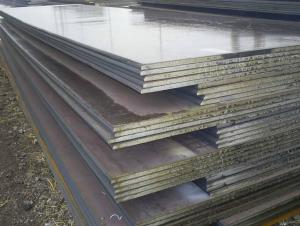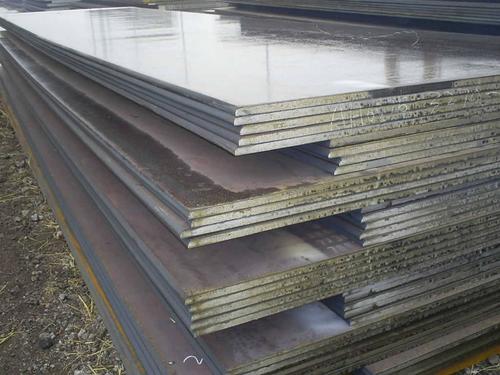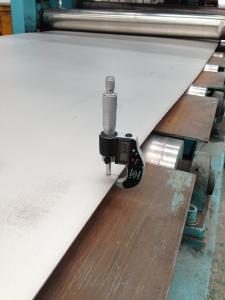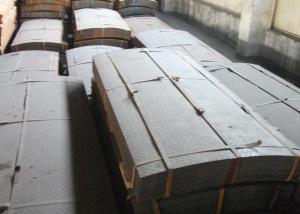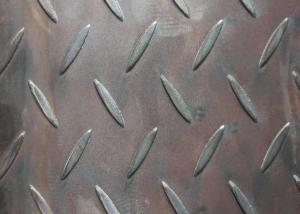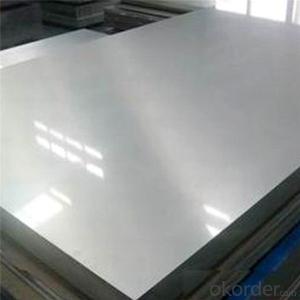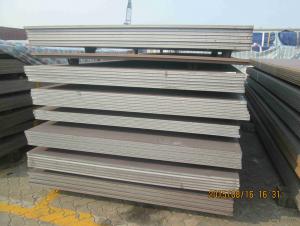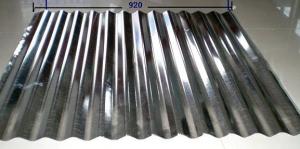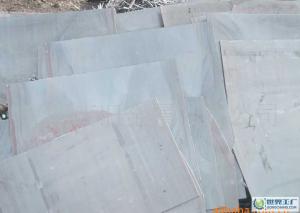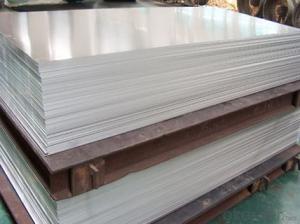High grade hot rolled plate
- Loading Port:
- China Main Port
- Payment Terms:
- TT OR LC
- Min Order Qty:
- -
- Supply Capability:
- -
OKorder Service Pledge
OKorder Financial Service
You Might Also Like
Plate refers to the thickness of the steel plate thickness 4.5-25.0mm, 25.0-100.0mm called the plate, thickness more than 100.0mm for heavy plate.
Plate mainly used in construction engineering, machinery manufacturing,container manufacturing, shipbuilding, bridge construction. Can also be used to make containers of all kinds, the furnace shell, furnace plate, bridge and vehicle static steel, low alloy steel plate, ship plate, boiler plate, pressure vessel steel plate, checkered steel plate, automobile frame steel plate, someparts and components such as welding tractor. Through plate uses: widelyused to make containers of all kinds, the furnace shell, furnace plate, bridgeand vehicle static steel, low alloy steel plate, plate for bridge plate, boiler plate,made like, pressure vessel steel plate, checkered steel plate, steel, automobile crossbeam tractors some parts and welding component specific application.
Bridge
For large railway bridge plate, requirements under dynamic load, shock,vibration, corrosion resistance, such as Q235q, Q345q etc..
Shipbuilding
Used in the manufacture of marine and inland river ship hull, require high strength, plasticity, toughness and cold bending performance, welding performance and corrosion resistance are good. Such as: A32, D32, A36, D36etc..
Boiler plate (boiler plate): used in the manufacture of various boilers andimportant accessories, because of boiler plate at medium temperature (350degrees below C) under the high pressure condition of work, in addition toendure high pressure, but also by the impact and fatigue load and water andcorrosion, requests to guarantee a certain strength, but also have welded andcold bending properties, such as good: Q245R
Pressure vessel
Mainly used for pressure vessel manufacturing petroleum, chemical gas separation and gas storage and transportation and other similar equipment,the general working pressure and pressure to 320kg/cm2 and even to 630kg/cm2, temperature of -20-450 degrees to work in the range of C, the requirements of vessel plate except with certain strength and good plasticityand toughness, must also have good cold bending and welding properties,such as: Q245R, Q345R, 14Cr1MoR, 15CrMoR etc..
- Q: What are the different surface textures for pre-painted steel sheets?
- The different surface textures for pre-painted steel sheets include smooth, embossed, brushed, and grainy textures.
- Q: Are steel sheets resistant to warping or bending under load?
- Yes, steel sheets are highly resistant to warping or bending under load due to their inherent strength and stiffness.
- Q: How do steel sheets handle thermal expansion?
- Steel sheets handle thermal expansion by expanding and contracting in response to changes in temperature. Like all materials, steel expands when heated and contracts when cooled. However, steel has a relatively low coefficient of thermal expansion compared to other materials, meaning it expands and contracts less for a given change in temperature. This makes steel sheets more resistant to warping or buckling due to thermal expansion. Additionally, steel is a strong and durable material, which allows it to handle the stresses caused by thermal expansion without significant damage. To further mitigate the effects of thermal expansion, engineers often design structures with expansion joints or use techniques such as pre-stressing and anchoring to accommodate the expansion and prevent damage. Overall, steel sheets are able to effectively handle thermal expansion due to their properties and the design considerations taken into account.
- Q: Are steel sheets available in different colors?
- Yes, steel sheets are available in different colors.
- Q: What is the process of anodizing steel sheets?
- The process of anodizing steel sheets involves several steps to create a protective surface layer on the steel. First, the steel sheets are cleaned thoroughly to remove any dirt, grease, or other contaminants. This is typically done using a degreasing agent or by immersing the sheets in a solvent bath. Once the sheets are clean, they are then rinsed with water to ensure all traces of the cleaning agents are removed. This step is important to prevent any interference with the anodizing process. Next, the steel sheets are placed in an electrolyte bath, which is a solution containing an acid, such as sulfuric acid. The sheets are connected to the positive terminal of a power source, while a cathode is connected to the negative terminal. This creates an electrical circuit. When the power source is turned on, an electrical current passes through the circuit, causing oxygen ions to be released at the anode (the steel sheets). These oxygen ions react with the iron in the steel, forming a layer of iron oxide on the surface. During the anodizing process, the thickness of the oxide layer can be controlled by adjusting the duration of the process or the voltage applied. Thicker layers provide enhanced corrosion resistance and can also be dyed to achieve different colors if desired. After the anodizing process is complete, the steel sheets are rinsed again to remove any remaining electrolyte solution. They are then dried to prevent water spots or streaks from forming on the surface. Overall, anodizing steel sheets is a method of creating a durable and corrosion-resistant surface layer by utilizing an electrochemical process. This process helps to improve the lifespan and appearance of the steel, making it suitable for various applications such as architectural, automotive, or industrial purposes.
- Q: What is the difference between a black and pickled steel sheet?
- The main difference between a black steel sheet and a pickled steel sheet lies in the surface finish and the process they undergo. A black steel sheet, also known as hot-rolled steel, is produced through a process called hot rolling. During this process, the steel is heated above its recrystallization temperature and passed through rollers to achieve the desired thickness. The resulting sheet has a dark, rough, and scaly surface, hence the term "black steel." The black surface is a result of the oxidation that occurs during the hot rolling process. On the other hand, a pickled steel sheet is produced through a process called pickling. After hot rolling, the black steel sheet undergoes a treatment where it is immersed in an acidic solution, typically hydrochloric acid or sulfuric acid. This pickling process removes the oxide scale from the surface of the black steel sheet, resulting in a smooth and clean surface. The pickling process also helps to improve the steel's corrosion resistance. The choice between a black steel sheet and a pickled steel sheet depends on the intended application. Black steel sheets are often preferred for structural components, such as beams and columns, where surface appearance is not a critical factor. Pickled steel sheets, with their smooth and clean surface, are commonly used in applications where a high-quality finish is required, such as automotive panels, appliances, and architectural elements. In summary, the key difference between a black steel sheet and a pickled steel sheet is the surface finish. The black steel sheet has a rough and scaly surface due to oxidation during hot rolling, while the pickled steel sheet has a smooth and clean surface after undergoing a pickling process to remove the oxide scale.
- Q: Can steel sheets be recycled after use?
- Yes, steel sheets can be recycled after use. Steel is a highly recyclable material, and recycling steel sheets helps to conserve energy and reduce the need for raw materials in steel production.
- Q: Are steel sheets suitable for manufacturing HVAC grilles?
- HVAC grilles can be manufactured using steel sheets, which are a suitable material choice. Steel is widely favored for its strength, durability, and versatility when it comes to HVAC grilles. It possesses the capability to withstand the elevated temperatures and air pressures commonly found in HVAC systems. Steel sheets can be effortlessly molded into different shapes and sizes to meet specific grille designs and requirements. Moreover, steel is resistant to corrosion, a crucial factor in ensuring the long-lasting performance of HVAC grilles in both indoor and outdoor settings. In summary, steel sheets offer the essential properties and characteristics necessary for producing top-notch HVAC grilles.
- Q: Can steel sheets be used for construction formwork or molds?
- Certainly, construction formwork or molds can utilize steel sheets, although their usage may not be as prevalent as materials like plywood or timber. Robust and enduring, steel sheets offer a sleek and uniform surface for concrete casting. They prove especially fitting for expansive construction ventures demanding formwork capable of withstanding immense pressures and loads. Additionally, steel sheets can be tailor-made and manufactured to meet precise project specifications, affording versatility in terms of shape, size, and arrangement. Nevertheless, the cost, weight, and accessibility of steel sheets should be weighed against alternative formwork materials prior to reaching a verdict.
- Q: Can steel sheets be used for flooring or decking?
- Yes, steel sheets can be used for flooring or decking. They are often used in industrial or commercial applications due to their durability, strength, and fire resistance. Steel sheets provide a sturdy and long-lasting flooring or decking option that can withstand heavy loads and harsh environments.
Send your message to us
High grade hot rolled plate
- Loading Port:
- China Main Port
- Payment Terms:
- TT OR LC
- Min Order Qty:
- -
- Supply Capability:
- -
OKorder Service Pledge
OKorder Financial Service
Similar products
Hot products
Hot Searches
Related keywords
